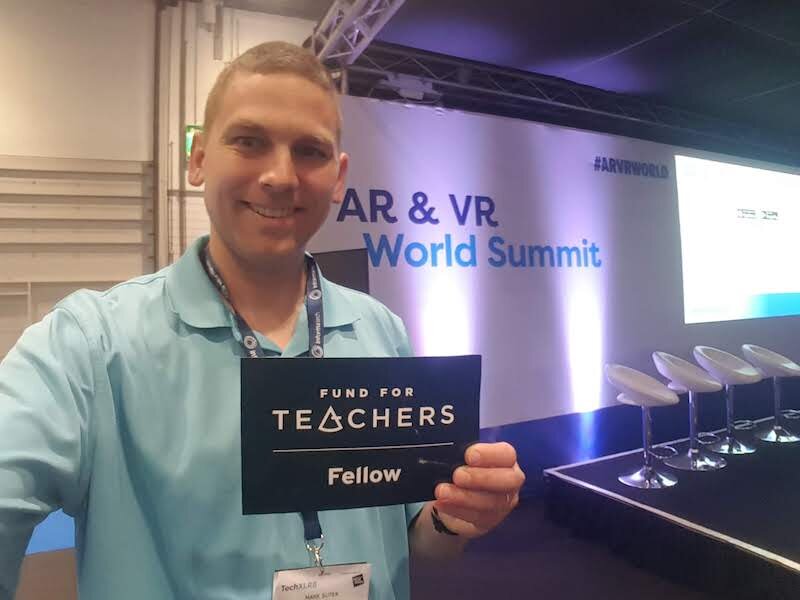A World Perspective on Virtual Reality
Mark Suter, a 2019 Jennings Fund For Teachers Fellow, teaches computer programming at Elida High School in Northwest Ohio
My trip to better understand how virtual reality is being used in the world has fruited several initiatives in my classroom. These fall into three main categories:
Creating VR experiences in Unity (software)
VR Art
Practicing public speaking
I travelled to the AR/VR World summit in London (Augmented Reality/Virtual Reality) and met with 6 startup companies in Paris to learn how they are using 360 video and VR to either train employees or entertain audiences. These experiences have inspired me to use virtual reality for more than consuming apps. Students do enjoy playing existing apps, but they really thrive and are challenged by creating apps, or creating content within an app for this purpose.
Creating VR experiences in Unity
While visiting the offices of Realcast, a small VR company in Paris, I witnessed how they are using Unity to create a location-based experience in the Paris catacombs. After interviewing some of their developers, I found that they challenged the traditional thinking that beginning programmers and software developers should just deep dive into computer programming. Rather, they suggested learning to code and assemble meaningful projects like those in Unity.
I’ve been using Unity in the classroom for about 5 years, but I have now begun to teach students how to create VR apps. Mainly these are apps that involve picking up objects, placing them in specific positions (like assembling a machine or changing a tire), and manipulating simple buttons, switches, drawers, and doors. There are a growing number of resources we’ve found, which are constantly being compiled and updated in the “Unity Teach” facebook group. Any teacher interested in using Unity for any reason in the classroom should search out this group and join.
Creating VR Art
In collaboration with our high school art teacher at Elida High School, art students used the HTC Vive VR system and an app called MasterpieceVR to model 3d objects. By holding a controller in each hand, they are able to add and remove material from the virtual object in a manner similar to how a sculptor would remove material from a block of marble to reveal the desired shape.
These models were then 3D printed by my students to create physical miniature versions of their sculptures, about five inches tall.
Observing VR professionals at work at a start-up in Paris
An art student at Elida High School works on a virtual sculpture which will then be modeled using a 3D printer
PowerPoint Presentation Practice
Students with anxiety over presenting have the opportunity to first practice those presentations in front of a virtual audience by using a free app for the HTC Vive called Speech Trainer. Their PowerPoint file is loaded into the program as a PDF, where they then use a hand controller to control the advancing of the slides. They are in a room of fifty people, with a giant projection screen behind them, and a laptop in front of them.
Students report that this VR experience gives them a little anxiety, but they feel better after running through the presentation a few times and ultimately experience less anxiety when presenting in front of their peers in the real world. This indicates that the VR experience is realistic enough to make the brain acclimate to the stress in a gradual way, giving students confidence for when they present in the real world.
Action Steps:
Follow up with all the contacts I made, seeking guest speakers, collaboration
Test out trials of the various AR/VR software
Connect with local companies to produce training sim prototypes for them, free of charge in exchange for critical feedback
Help other teachers apply




